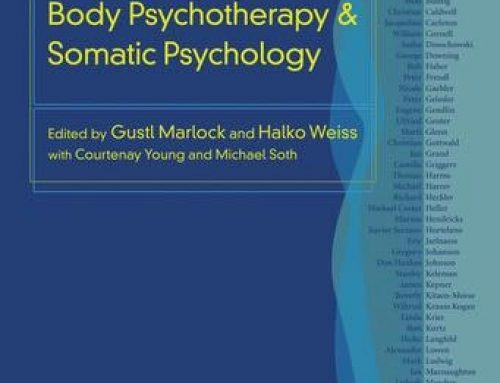PsycheVisual presents Video by Adrienne Margarian on Somatic Countertransference
 In this short video extract from her lecture, Adrienne Margarian summarises her thinking on somatic countertransference, refers to her research and gives a couple of clinical examples. A significant aspect of her research is the cross-cultural dimension - she confirms that somatic countertransference this significant in different cultural contexts, both in terms of the client's and the therapist's background.
In this short video extract from her lecture, Adrienne Margarian summarises her thinking on somatic countertransference, refers to her research and gives a couple of clinical examples. A significant aspect of her research is the cross-cultural dimension - she confirms that somatic countertransference this significant in different cultural contexts, both in terms of the client's and the therapist's background.
She starts by saying: "Feeling nauseous, sleepy, hungry, thirsty, lower back pain, splitting headache … What is countertransference? Is everything felt by the therapist relevant for therapy?"
She then defines 'Somatic Countertransference': when the body of the therapist is activated in the therapy session, thus going beyond the traditional notions of countertransference as thoughts, feeling and images, including the additional dimension: physical sensations - when the body of the therapist is enlivened or deadened or made to feel something that may relate to the psyche of the client.
She quotes Andrew Samuels’ distinction between ‘embodied’ versus ‘reflective countertransference’ as a subset of countertransference: “There is a considerable difference between on the one hand my reflecting of the here and now state of my patient, feeling just what he's unconscious of at the moment and on the other my embodiment of an entity, theme or person of long-standing intra-psychic inner-world nature. One problem for the analyst is that the two states may seem similar.”
She gives two case vignettes from her research, where therapists reported somatic experiences in the countertransference: one seems uncanny and accurate (with the therapist sensations of itchiness tapping into a long-forgotten symptom/illness in the client's childhood); whereas the other seems less extraordinary and more generic.
Adrienne Margarian concludes: “Empirical studies have been conducted … demonstrating that many psychotherapists experience somatic countertransference, irrespective of their treatment style. It is of particular interest to the trauma treatment field which has a focus and concern about psychotherapists becoming burnt out as a consequence of vicarious traumatisation. In my opinion, which is shared by some, vicarious traumatisation equates with the physical aspect of the somatic countertransference. To make sense of this, think of how therapists may become hyper-vigilant or prone to exaggerated startle responses after working for some time with trauma patients.”
Whilst bringing badly needed attention to the therapist's bodymind experience, the problem with these formulations now is, of course, that they are no longer cutting-edge (as they were in the mid-1990s), but somewhat retrograde: both Nick Totton and I have suggested critiques of the somatic countertransference notion, in that the very term still perpetuates a dualistic conception, making it a special instance, rather than "the thing itself", as Nick says: " 'Embodied transference and countertransference' is not a special sub- category, but the thing itself. If countertransference is not experienced in the therapist's body, we need to ask what has caused this dissociation."
I said a similar thing in 1999: "In this sense the term ‘somatic countertransference’ owes more to psychotherapy’s traditional focus on the therapist’s thinking (as opposed to feeling and sensation) than to clinical accuracy and coherence. In other words: the term is still more a symptom of the return of the counsellor’s own repressed body than an expression of its integration. From an holistic perspective, ‘somatic countertransference’ is like saying ‘a swimming fish’.
But having said that, the term can retain some clinical usefulness if we’re clear that the main feature is not the somatic nature of the experience per se, but the degree to which the body can be experienced as alien. This ‘alienness’ is a function of the client’s body/mind split, i.e. their internal sense of dissociation, which indeed can communicate itself to the counsellor via projective identification. The intensity of the counsellor’s somatic experience is then a measure of the client’s dissociation from it."



Leave A Comment
You must be logged in to post a comment.